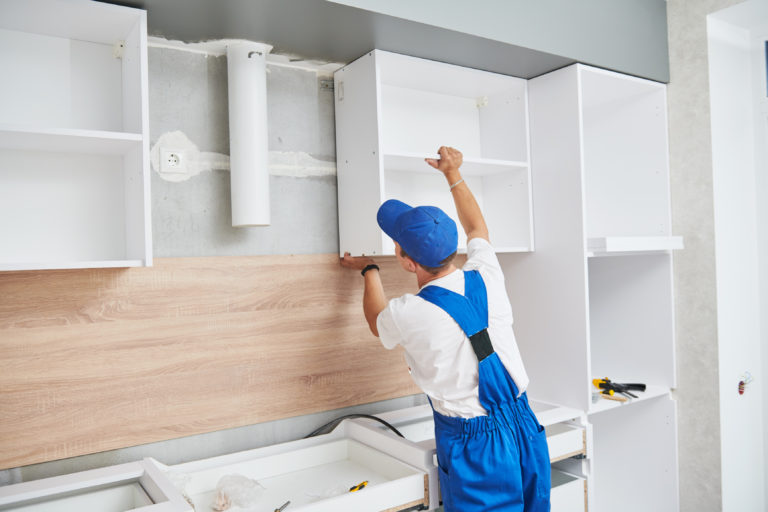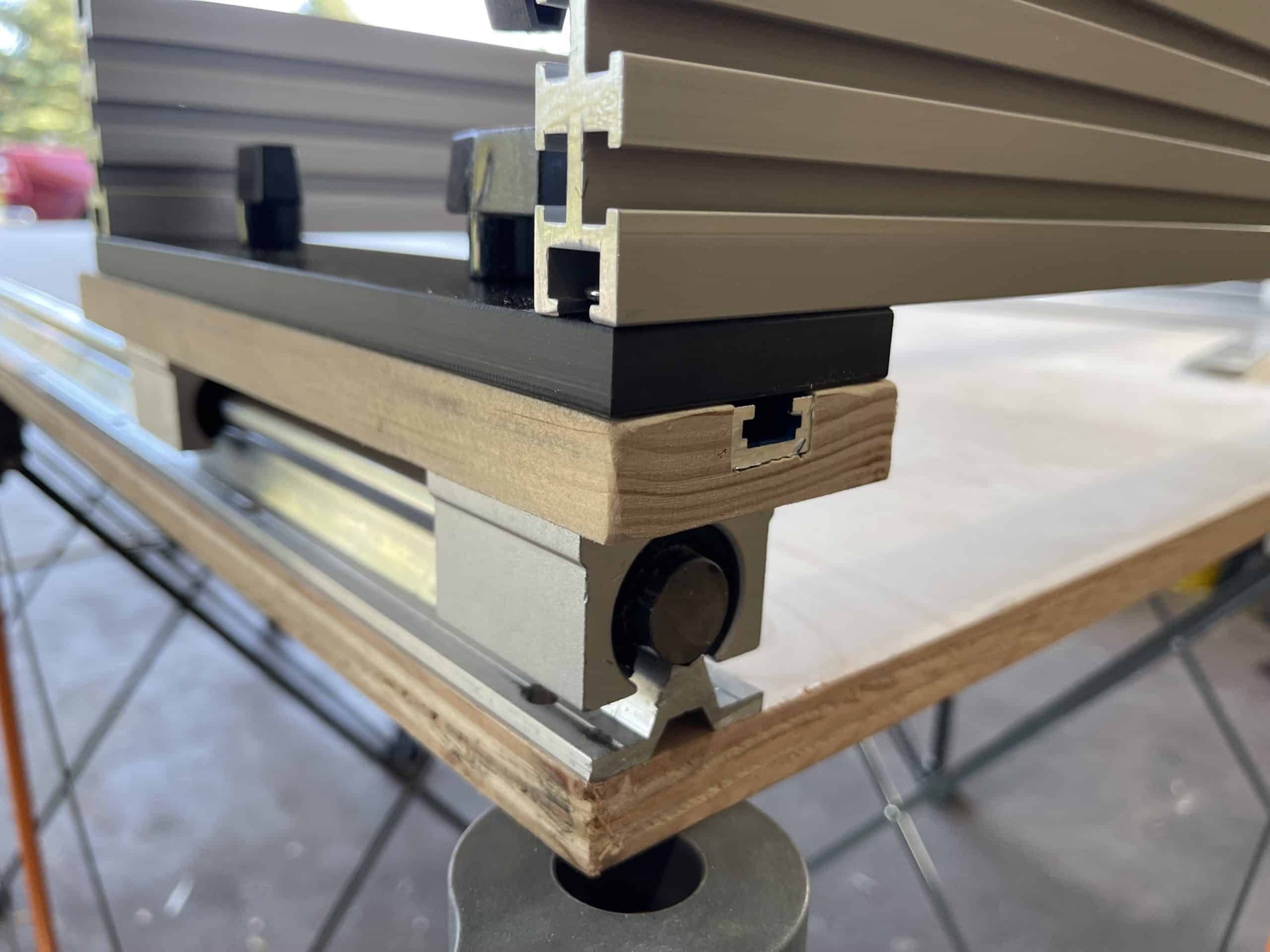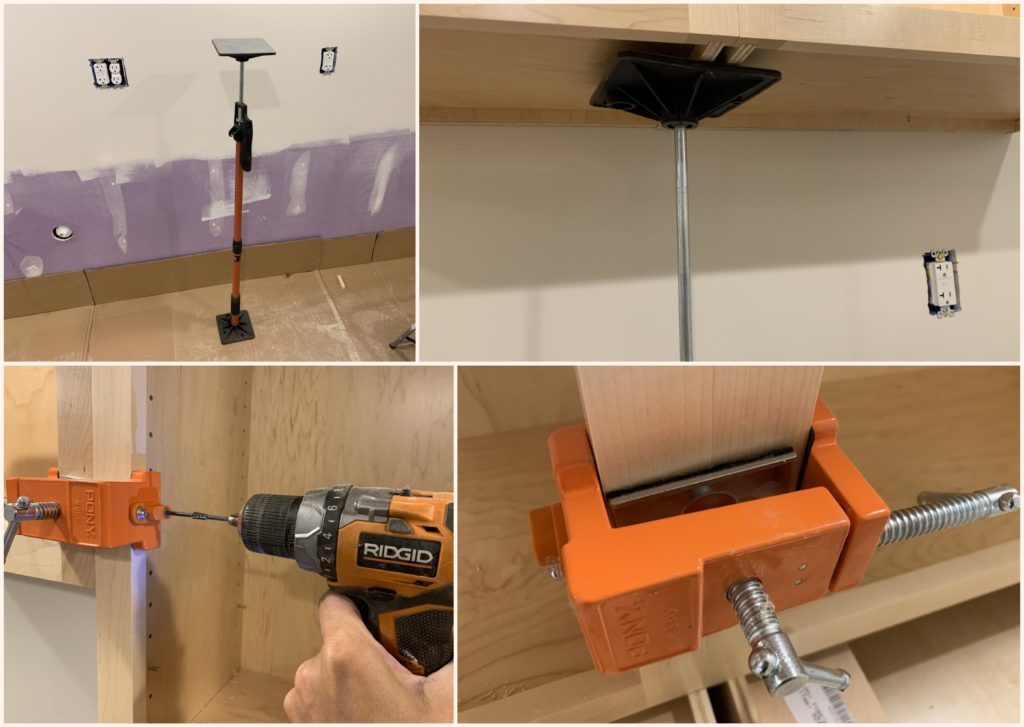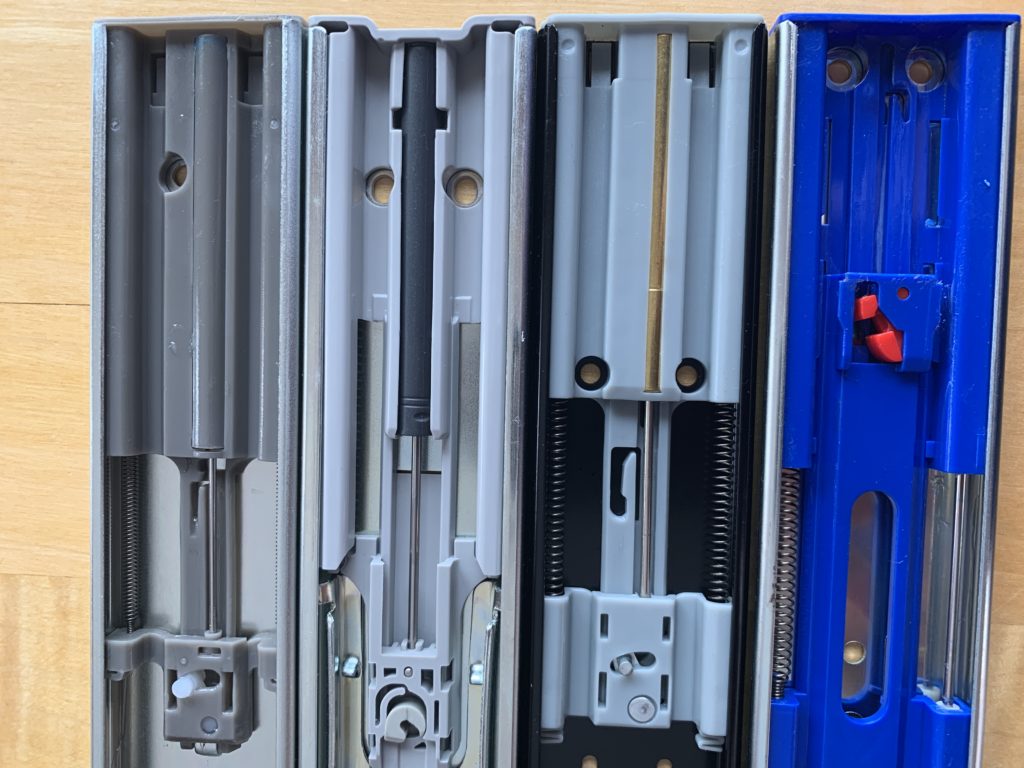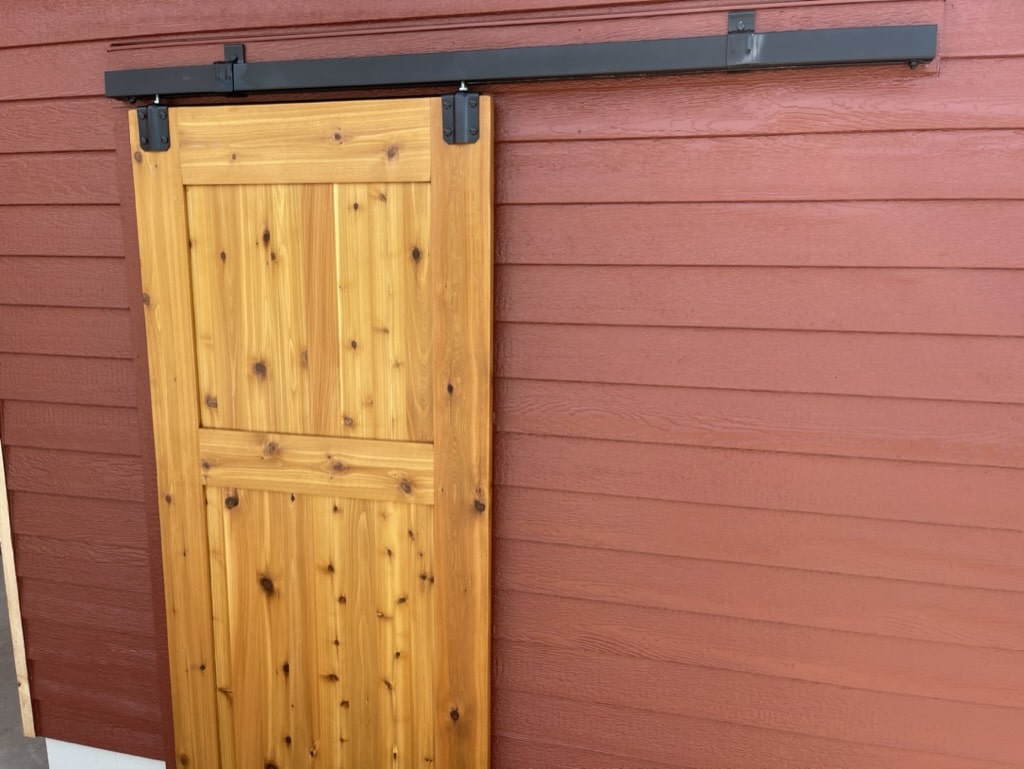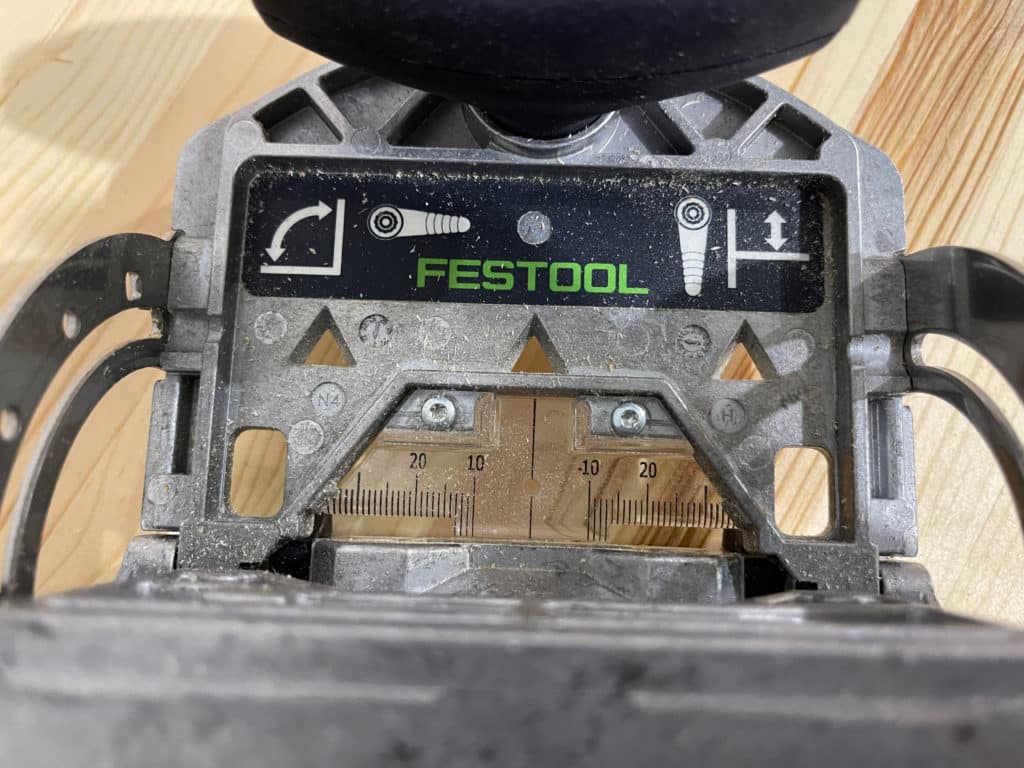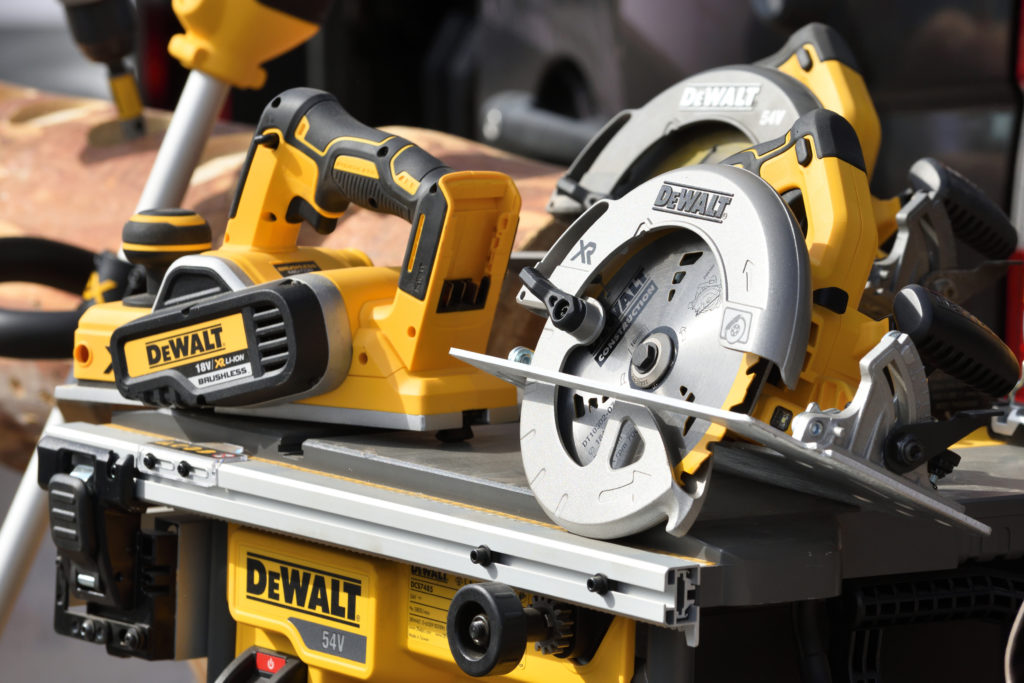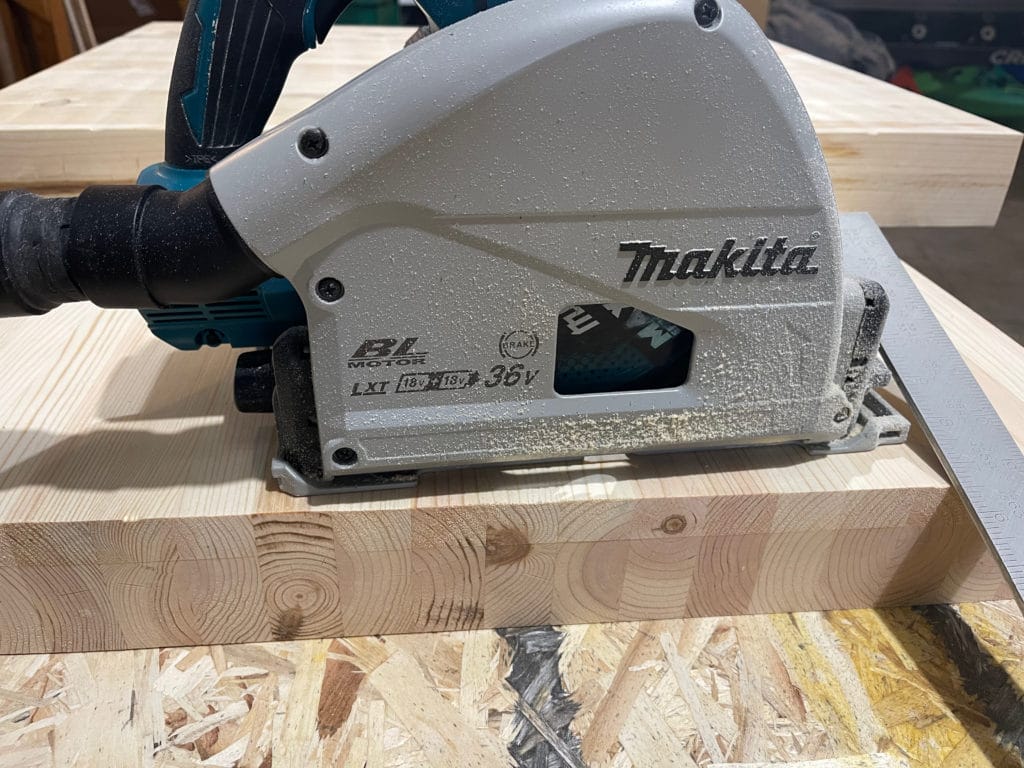FastCap Cabinet to Wall Screws
Best Screws For Installing Cabinets
FastCap: #1 Cabinet Screw
IN THIS GUIDE:
› CABINET JACK: UPPERHAND JACK
› STUD FINDER: FRANKLIN FINDER + LEVEL
› HARDWARE JIG: TRUE POSITION PRO
› CABINET HANGING RAIL: HIY SYSTEMS RAIL
One of the first questions of many DIY cabinet installs is how kitchen cabinets are attached to the wall. While the quick answer is with cabinet screws installed firmly into the house studs, other options exist.
In this guide, we’ll review:
- Determining wood studs vs. lathe
- Cabinet hangers as an alternative to screwing through each cabinet
- Considerations for metal studs
- Concrete walls and installing screws
- Tools to find studs and avoid plumbing and electrical lines
- Using the suitable screws and tools to connect cabinets
- Holding the cabinets in place with a cabinet jack
- And lastly, avoiding utility lines with a multi-function stud sensor
Warning: This article is for educational purposes only. For actual cabinet installation, refer to the manufacturer’s instructions or hire a professional if you are unsure. Severe damage, injury, or death can occur from improperly installed cabinets.
Page Contents
How Cabinets are Attached to the Wall?
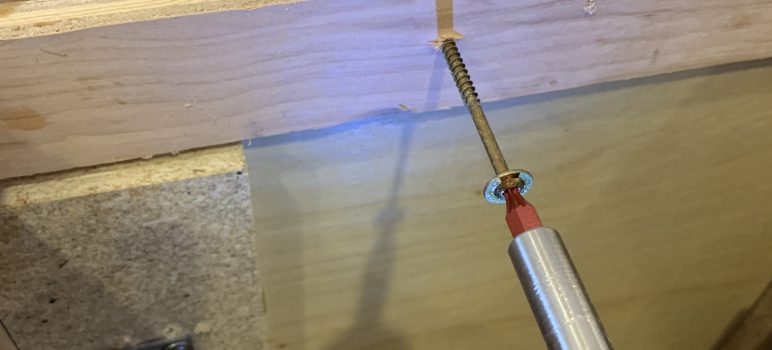
In most kitchens, cabinets are attached with screws through the drywall or plaster into the wood stud behind. An installer will first locate the stud, mark the cabinet for the screw location and then lift and install the screw. Generally, a cordless drill, level, and shims are essential to attach cabinets to the wall.
But, a few other options, including cabinet hanger rail systems, offer a more straightforward solution for some DIY’ers.
Most Common Installation Issues
When it comes to installing cabinets there is a lot that can go wrong.
Sure, I expect walls to be bowed, floors to be sloped and cabinets to be heavy. While with experience these can be worked around, there are basic issues to avoid:
- Locate the studs! Not locating the stud center and securely installing the cabinets can cause cabinet failure later.
- Use the right screws
- Woodpecker cabinet backs from missing stud locations and creating many holes. Measure carefully to transfer stud location to cabinets. It’s just not acceptable to have 3 or 4 holes where the stud was supposed to be
- Not using the proper shims and cabinet installation supplies
- Crooked cabinets caused by lack of required installation tools like a level and having
Steps to Attach Cabinets to the Wall
1. Determine your wall construction
Step #1 is understanding how your wall is constructed. Because the screws you will need to attach the cabinet to the wall vary by what’s behind it, you need to determine if your construction is:
- Drywall with wood studs
- Drywall with metal studs
- Plaster and lathe with wood studs
- Masonry (brick, concrete, block)
If your home is newer, there’s a great chance it’s drywall with wood studs, as it is the most common construction. So how do you determine if your walls are wood studs or lathe? One excellent method to find out is by looking in the attic under the insulation to see how the ceiling is constructed. Using this method, you’ll quickly find drywall or lathe/plaster.
Lastly, you can find metal studs using a magnet or stud finder built for metal walls.
2. How many screws do I need to use?
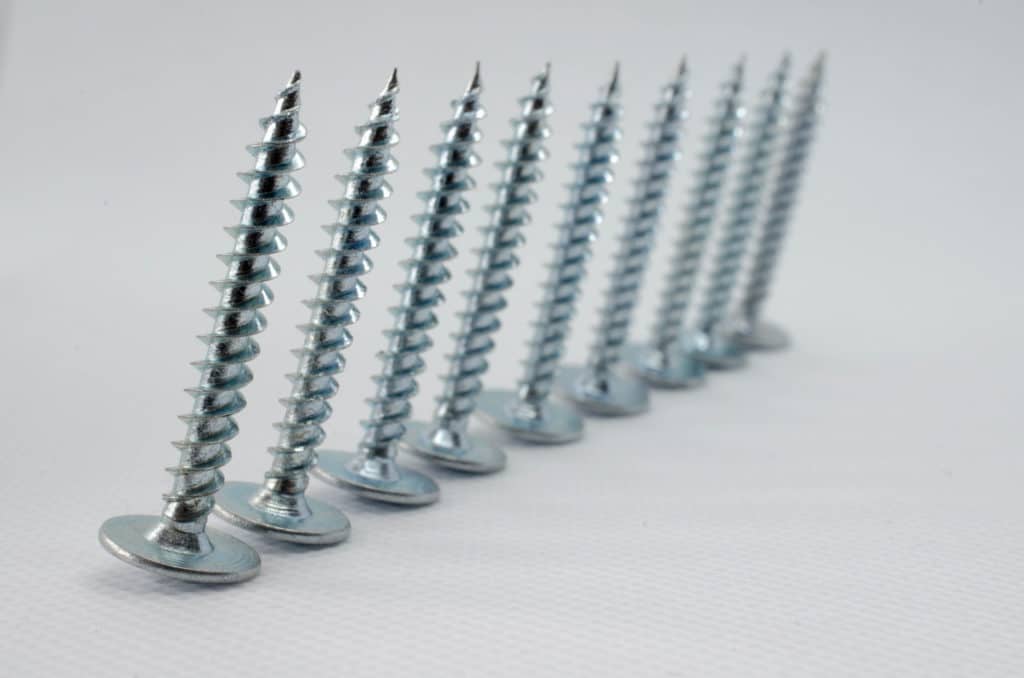
In general, it’s recommended to use at least two screws per stud or support bracket. For most cabinets this requires installing a screw at the top of the upper cabinet and then at the base.
However, it is also best to install at least two screws into the adjacent cabinets to ensure maximum stability and weight distribution of the cabinet.
3. Attaching cabinets to wood stud walls
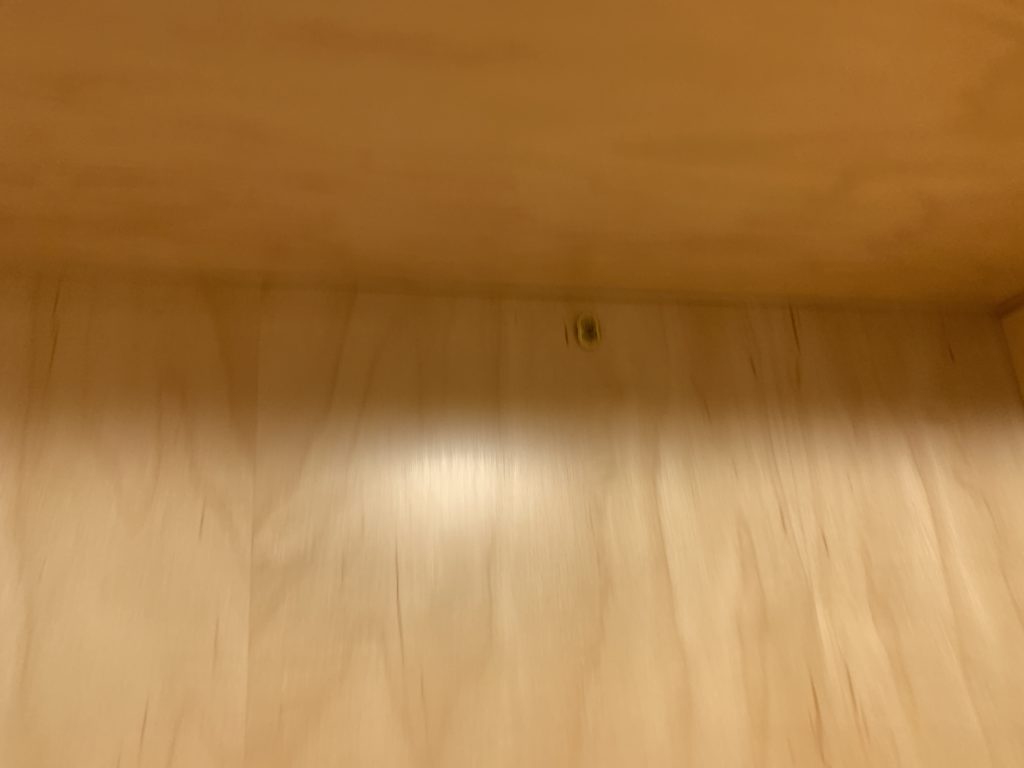
For installing cabinets on wood stud walls, there are four basic steps:
- Find the studs using a stud finder.
- Mark the cabinet back with the hole location and drill a pilot hole.
- Position the cabinet. For upper cabinets, I recommend a cabinet jack.
- Use cabinet screws to attach the cabinet. But use the manufacturer’s specified length for a proper hold.
4. How to attach cabinets to metal stud walls
Metal stud walls are detected by running a magnet along the border – or even some higher-end electrical stud finders.
While the steps are the same as wood stud walls, you’ll need to use metal screws to hold the cabinet in place firmly.
Lastly, depending on how much weight will be placed in the cabinet, some installers like to put two screws into the top and bottom of the upper cabinets. When paired with the proper number of screws, you can use Liquid Nails for even more holding power and install an under-cabinet block for added support.
5. Attaching cabinets to brick or concrete walls
The great thing about hanging cabinets on masonry walls is the ease of placing screws and the strength of the connection. But, the hard part is needing to pre-drill holes and fuss with concrete dust.
Since you won’t need to worry about locating studs on brick and concrete walls, your focus is on having suitable screws and a pilot hole drill bit (or several). Don’t want to see the screws? You can use screw covers to hide the concrete screw.
Want to make the job easier? Use a pair of cabinet jacks like these FastCap jacks to hold the upper cabinet in place to drill the holes.
Frequently Asked Questions

Are kitchen cabinets glued to the wall?
Kitchen cabinets are not glued to the wall. Instead, they use either cabinet hanging rail systems or cabinet screws that firmly connect the wall to the studs or wall structure.
Can I remove cabinets without destroying them?
Almost all cabinets can be carefully removed without damage to the cabinets. Most professionals will start by removing the trim with a small pry bar, then working from open ends to locate screws holding the cabinets in place and remove cabinets one at a time.
Can cabinets fall of the wall?
When improperly installed, cabinets can and do fall off the wall. Professionals will use the adequately rated screws, screw length, and number of screws per cabinet to allow the cabinet to reach its loaded weight rating.
Summary
While installing a cabinet so the wall can be a DIY project, the accuracy and need to ensure all screws are appropriately installed may require a professional installer.
For more tips, be sure to check out our cabinet installation series.
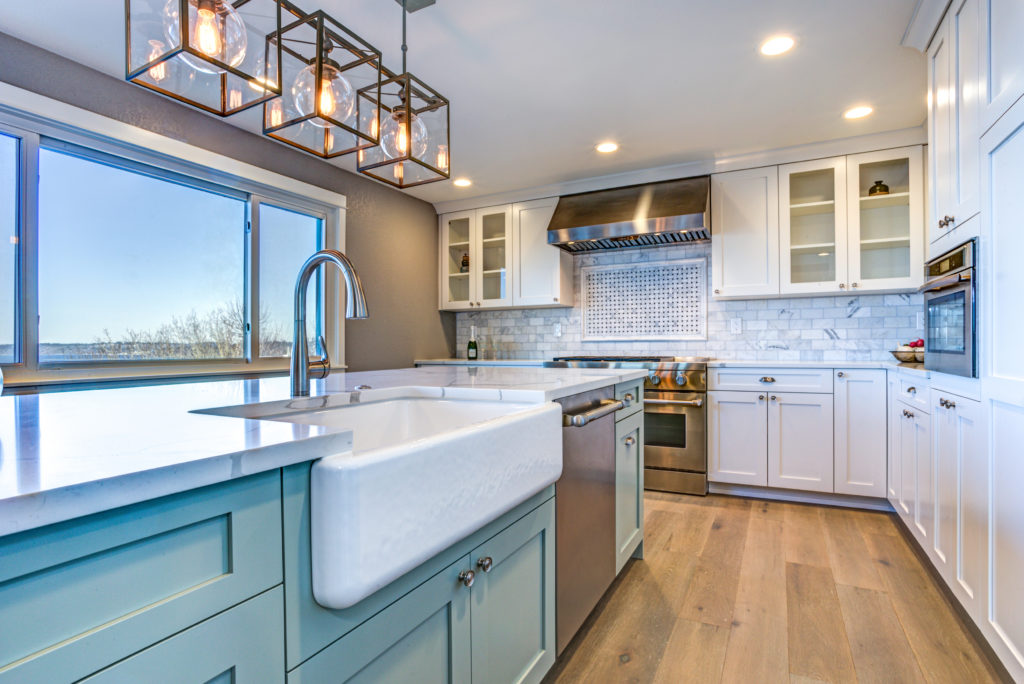
Cabinet Installation Series
Planning & Tools To Install Cabinets
Guides for Cabinet Installation
Finishing Cabinets With Molding and Hardware
- The Cabinet Claw Is An Unique Tool Which Combines...
- Clamp Specifications: Works On Stiles From 1-1/2...
- Easy Use To Install And Highly Durable. Protective...
- Face Frame Stiles Can Be Tightened, Aligned,...
- A unique tool which combines the multiple steps of...
- 【Professional Specification.】The cabinet...
- 【Rust-proof & Sturdy Steel.】Made of primary...
- 【Accurate & Efficient Drill Holes.】The...
- 【Easy to Use.】These cabinetry clamps set is...
- 【Widely Applications.】This cabinetry clamp...
- EASY WORK: MAXENIKIT cabinet installation jack is...
- AN EXTRA HAND: No frustration of trying to keep...
- EASY TO USE: This cabinet lift jack is easy to use...
- VERY STURDY MATERIAL: MAXENIKIT cabinet support...
- UNIQUE DESIGN: The quick-release lever can lower...
- Home Improvement Essentials: WORKPRO 3rd hand...
- Rotating Head with Non-slip Pads: Iron-made pads...
- Heavy Duty&Premium Quality: The stem rod is made...
- Hands Free&Labor Saving: This extension pole...
- Wide Applications: Offering a third hand to help...
- ⭐【Professional Point Wood Dril & Partner 】-...
- ⭐【Metric + Imperial Scale】- Contains metric...
- ⭐【Detachable & Portable】- Cabinet hardware...
- ⭐【Time Saver Quick Drilling】- Cabinet...
- ⭐【Jig Widely Application】- Cabinet hardware...
Last update on 2024-03-26 at 07:03 / Images from Amazon
- About the Author
- Latest Posts
Eric has been a professional woodworker for over thirty years and has worked in small cabinet shops making everything from kitchen cabinets to hand-made furniture. Now working from a home woodworking shop Eric is sharing his passion for woodworking, tool advice and how-to knowledge from his Minnesota-based woodshop.
